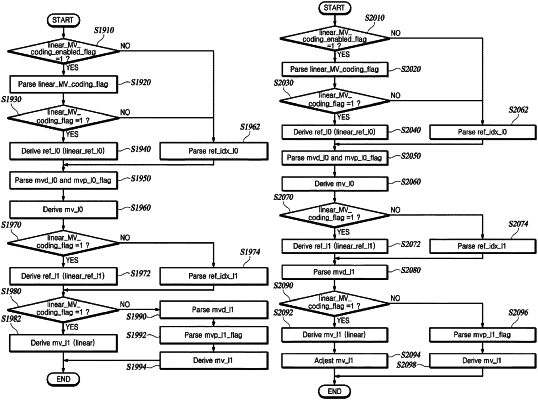| CPC H04N 19/137 (2014.11) [H04N 19/105 (2014.11); H04N 19/159 (2014.11); H04N 19/176 (2014.11); H04N 19/70 (2014.11)] | 18 Claims |

|
1. A video decoding apparatus for inter-predicting a current block using any one of a plurality of bi-prediction modes, the apparatus comprising at least one processor configured to:
decode enabled information indicating whether a first mode of the plurality of bi-prediction modes is allowed;
decode, at a block level for the current block, mode information indicating whether the first mode is applied to the current block, when the enabled information indicates that the first mode is allowed;
when the mode information indicates that the first mode is applied to the current block,
decode, at the block level, first motion information including differential motion vector information and predicted motion vector information for a first motion vector and second motion information not including at least a portion of predicted motion vector information and differential motion vector information for a second motion vector, and
derive the first motion vector based on the first motion information, and derive the second motion vector based on at least a portion of the first motion information and based on the second motion information; and
predict the current block using a reference block indicated by the first motion vector in a first reference picture and a reference block indicated by the second motion vector in a second reference picture,
wherein the first and second reference pictures are determined at a high level that is upper than the block level, and thereby are used in common as reference pictures for the current block and blocks, associated with the high level, to which the first mode is applied.
|